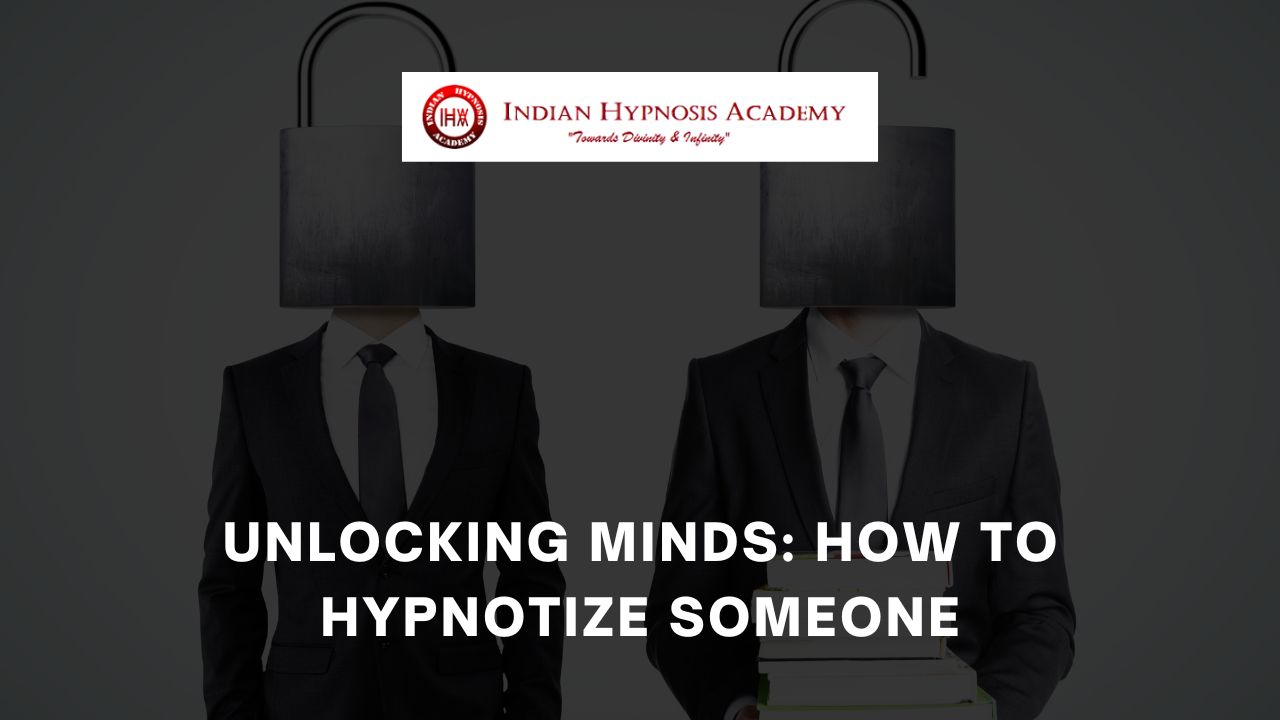Welcome to the intriguing world of hypnotism, where minds unlock and possibilities unfold! Have you ever wondered how it feels to have the power to influence someone’s thoughts and actions? Well, look no further because today we’re diving deep into the art of hypnosis. Whether you want to explore this fascinating skill for personal growth or simply satisfy your curiosity, this blog post will guide you through the secrets of mesmerizing minds. So fasten your seatbelts and get ready for a mind-bending journey on how to hypnotize someone!
What is Hypnosis and How Does it Work?
What is hypnosis and how does it work? To put it simply, hypnosis is a state of focused attention and heightened suggestibility. It’s like entering a trance-like state where the conscious mind takes a back seat, allowing the subconscious mind to become more receptive to suggestions.
During hypnosis, the brain waves shift into what’s known as the alpha state, which is characterized by relaxation and increased receptivity. This altered state of consciousness allows for deeper exploration of thoughts, memories, and emotions that may be hidden in our subconscious.
But let’s debunk some misconceptions here – no, you won’t suddenly lose control or reveal your deepest secrets under hypnosis! Contrary to popular belief perpetuated by stage shows or movies, you are always in control during this process. Hypnosis simply helps relax your mind so that positive changes can be made through suggestion.
The power behind hypnotism lies in tapping into our unconscious minds—the part responsible for automatic behaviors and habits. By bypassing our critical thinking faculties temporarily, we can access deep-seated beliefs or patterns that might be holding us back from personal growth.
So how does it actually work? Well, there are various techniques used to induce hypnosis ranging from progressive relaxation exercises to guided imagery. The key is finding an approach that suits both the hypnotist and the person being hypnotized—a harmonious dance between trust and cooperation.
Now that we’ve dipped our toes into understanding what hypnosis is all about let’s explore its many benefits next! But before we do so—remember—the true power lies within yourself; your willingness to explore new horizons with an open mind will unlock endless possibilities on this mesmerizing journey. So stay tuned!
Misconceptions about Hypnosis
There are numerous misconceptions surrounding the practice of hypnosis, largely fueled by popular media and stage performances. These misconceptions can often lead to fear or skepticism about the effectiveness or safety of hypnotism. However, it’s important to separate fact from fiction when it comes to understanding this powerful technique.
One common misconception is that hypnosis involves mind control or manipulation. This couldn’t be further from the truth! Hypnosis is a collaborative process where both the hypnotist and the subject work together towards a common goal. The person being hypnotized remains in complete control at all times and cannot be forced to do anything against their will.
Another myth is that only weak-minded individuals can be hypnotized. In reality, anyone with an open mind and willingness to participate can experience hypnosis. It has nothing to do with intelligence or susceptibility but rather an individual’s ability to relax and focus their attention.
Contrary to popular belief, hypnosis does not involve entering a deep sleep state or losing consciousness. Instead, it induces a deeply relaxed state of heightened awareness where the subject becomes more receptive to suggestions.
Furthermore, there is no magical “snap” involved in bringing someone out of a hypnotic trance. A skilled hypnotist will always ensure proper termination of the session by gradually guiding the subject back into full wakefulness.
By dispelling these misconceptions about hypnosis, we can better understand its true potential as a therapeutic tool for personal growth and self-improvement. Whether used for breaking bad habits, reducing stress and anxiety, improving performance, or addressing emotional issues – hypnotherapy offers countless benefits when utilized correctly.
Benefits of Hypnosis
Hypnosis has long been a subject of fascination and skepticism. While some may view it as nothing more than a parlor trick, others have discovered its many benefits in various areas of life. So, what are the real advantages of hypnosis?
One major benefit is stress reduction. In our fast-paced world, stress can take a toll on both our physical and mental well-being. Through hypnosis, individuals can tap into their subconscious mind and learn relaxation techniques that help alleviate stress.
Hypnosis can be an effective tool for breaking bad habits or overcoming addictions. Whether it’s smoking cessation or weight loss goals, hypnotherapy can reprogram the mind to change destructive patterns and behaviors.
Furthermore, hypnosis has shown promising results in managing chronic pain. By redirecting focus away from the pain signals and encouraging relaxation responses, individuals may experience relief without relying solely on medication.
In addition to these practical applications, hypnosis also offers psychological benefits. It can boost self-confidence by addressing deep-rooted beliefs and negative thought patterns that limit personal growth. It helps unlock hidden potential within oneself.
While hypnotism should always be approached with caution and ethical considerations in mind, there is no denying its potential for positive change in people’s lives.
Steps to Successfully Hypnotize Someone
When it comes to successfully hypnotizing someone, there are several steps you can follow to increase your chances of achieving a deep state of relaxation and suggestibility.
First and foremost, it’s important to establish rapport with the person you want to hypnotize. Building trust and creating a comfortable environment will make them more open to the experience. Next, choose an appropriate setting that is free from distractions and allows for privacy.
Once you have set the stage, begin by guiding the individual into a relaxed state through techniques such as progressive muscle relaxation or guided imagery. This helps quiet their conscious mind and opens up their subconscious to suggestion.
After inducing relaxation, use carefully worded suggestions to create specific outcomes or behaviors in their mind. Make sure these suggestions are positive, clear, and aligned with what they desire on a subconscious level.
Throughout the process, maintain a calm and confident demeanor as this will enhance your credibility as a hypnotist. Additionally, be attentive to nonverbal cues from the person you are hypnotizing; this will help gauge their level of receptiveness and adjust your approach accordingly.
Remember that practice makes perfect when it comes to hypnosis. The more you refine your technique and become attuned to how different individuals respond, the better results you’ll achieve in guiding them into a trance-like state.
By following these steps diligently while respecting ethical considerations (which we’ll discuss later), you can unlock amazing potential within people’s minds through hypnosis!
Different Techniques and Approaches for Hypnotism
When it comes to hypnotizing someone, there are various techniques and approaches that can be employed. One commonly used method is known as the “progressive relaxation” technique. In this approach, the individual is guided through a series of relaxation exercises, allowing them to enter a deep state of calmness and receptivity.
Another popular technique is called “direct suggestion.” This involves delivering specific suggestions directly to the subconscious mind of the person being hypnotized. By using carefully chosen words and phrases, the hypnotist can influence their thoughts, behaviors, and beliefs.
Some practitioners also utilize what is known as “visualization” or “imagery” techniques. These involve guiding individuals to create vivid mental images that allow them to tap into their inner resources and make positive changes in their lives.
In addition to these techniques, there are also more indirect approaches such as metaphorical storytelling or Ericksonian hypnosis. These methods use stories or metaphors to communicate with the subconscious mind on a deeper level.
It’s important to note that different people may respond better to different techniques based on their individual preferences and suggestibility. Therefore, it’s essential for a skilled hypnotist to adapt their approach accordingly.
As with any therapeutic modality, ethical considerations should always be taken into account when using hypnosis. It’s crucial for practitioners to obtain proper training and certification in order to ensure they are providing safe and effective services.
Ethical Considerations for Using Hypnosis
When it comes to using hypnosis on someone, there are several ethical considerations that one must keep in mind. The power of suggestion can be incredibly influential, so it is important to approach hypnotism with responsibility and respect.
First and foremost, consent is crucial. It is essential to ensure that the person being hypnotized has given their explicit consent and fully understands what they are agreeing to. Hypnotizing someone without their knowledge or against their will is not only unethical but also illegal.
Confidentiality is another important ethical consideration. As a hypnotist, you have access to intimate thoughts and experiences of your clients. Respecting their privacy by keeping all sessions confidential builds trust and creates a safe environment for exploration.
Additionally, it’s essential for the hypnotist to have proper training and expertise in hypnosis techniques. Without proper knowledge or experience, there’s a risk of causing harm or manipulating individuals unintentionally.
Moreover, maintaining professionalism during hypnosis sessions is crucial. This includes refraining from exploiting vulnerable individuals or using hypnosis for personal gain or entertainment purposes.
Always prioritize the well-being and safety of your clients above all else. If at any point during a session you feel unsure about continuing or notice any discomfort from the individual being hypnotized, it’s imperative to stop immediately.
By considering these ethical principles when practicing hypnosis, you can ensure that this powerful tool remains an empowering and beneficial experience for everyone involved.
Conclusion
Unlocking the power of the mind through hypnosis is a fascinating and effective tool that can bring about positive change in people’s lives. While there are many misconceptions surrounding hypnotism, it is important to understand that it is a safe and ethical practice when used responsibly.
By following the steps outlined in this article, you can learn how to successfully hypnotize someone. Remember to always prioritize consent and respect the boundaries of your subject. By honing your techniques and approaches, you can unlock hidden potentials within individuals’ minds.
Hypnosis offers numerous benefits, such as stress reduction, improved mental focus, behavior modification, and increased self-confidence. Whether you want to help yourself or others overcome challenges or simply explore the untapped depths of the subconscious mind, hypnosis provides an extraordinary avenue for personal growth.
So go ahead and delve into this captivating realm of hypnosis with curiosity and responsibility. With practice and dedication, you will unlock a world of possibilities by harnessing the power of suggestion and influencing positive change in those around you.
Remember: The mind is an incredible tool waiting to be unlocked!



